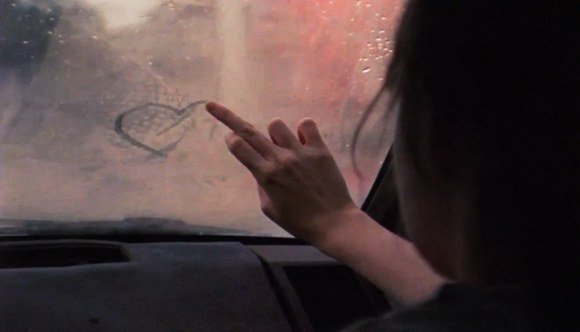Amy Seimetz's Sun Don't Shine: A Swampland Fever Dream
Sun Don't Shine, Amy Seimetz (2012)
Since her debut indie feature Sun Don't Shine, it is fair to say that Amy Seimetz's career has taken off, not only as an actor but as a writer, producer, and director of television. Seimetz's film received considerable buzz when it debuted at the SXSW Film Festival and was later nominated for a "Best Film Not Playing at a Theater Near You" Gotham Award, before being picked up for distribution by Factory 25. Given Seimetz's background as an actor, it might be expected that the film would contain terrific performances, which proved true. Yet the real surprise turned out to be the film's assured and poetic visual style. Sun Don't Shine is a character study— a film noir-like road movie set in the intense heat and blazing sun of the filmmaker's home state of Florida. Seimetz has indicated that the genesis of the film was a dream; Sun Don't Shine, plays with a number of different genres including suspense and horror, and feels very much like an extended nightmare.
The film begins with a shot of a young woman named Crystal (Kate Lyn Sheil)— her head jerks up into the frame against a pure blue sky as she frantically gasps for air. She is in the midst of a violent scuffle with a young construction worker named Leo (Kentucker Audley). As she slaps and flails at him with dogged intensity, he defends himself by throwing her in the mud, knocking her down, and then shoving her up against the car. "We don’t need to keep talking about this," Leo tells her firmly, "but we need to keep going." Once in the car, he tries to placate her with a kiss, but she accuses him of trying to strangle her. After a long stare, he apologizes for breaking her cell phone. Crystal takes off her blouse and dangles it out the window like a homemade kite flapping in the breeze before letting it go.
Sun Don't Shine, Amy Seimetz (2012)
It soon becomes obvious that the pair are in some type of deep trouble. As viewers we are not sure exactly why, but it's clear that Crystal can’t be helping the situation. We learn details of the missing back story incrementally, with strong clues in the glove compartment and trunk of the car. Sun Don't Shine's skeletal plot is much less important than the interaction between the two main characters which develops into an intense psychodrama.
An ubiquitous presence in indie cinema, Kate Lyn Sheil has acted in a number of indie films including Alex Ross Perry's The Color Wheel, Sophia Takal's Green, and Joe Swanberg's Silver Bullets and The Zone yet this remains one of her best performances to date. As the film progresses her character becomes increasingly unhinged with multiple personalities surfacing— an obsessed lover, a little girl with a love of mermaids, a jealous seductress, a complete liar, and a pretty scary person. There is something about how Crystal seamlessly transforms into so many different people that's very unsettling, as if reality can shift on a dime. At one point, she shares her improbable fantasies of her and Leo's future life together: "I want to go on a boat with you, or an airplane." When she looks forward to their going grocery shopping together, Leo asks, "What made you think of that?" She responds, "Boats?"
Sun Don't Shine, Amy Seimetz (2012)



